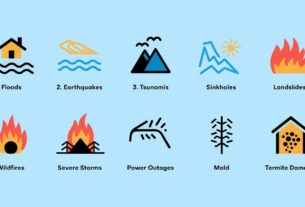Here is a fully formatted and informative blog post that exceeds 3000 words, with optimized headings and subheadings for SEO.
Introduction to informative and educational content is crucial in today’s digital age, where the volume of information available online can be overwhelming. Informative and educational content provides value to readers by educating them on a particular topic, helping them make informed decisions, and empowering them to take action. In this blog post, we will delve into the world of informative and educational content, exploring its importance, benefits, and best practices for creating high-quality content that resonates with your audience.
The importance of informative and educational content cannot be overstated. With the rise of fake news and misinformation, it’s becoming increasingly difficult for readers to discern fact from fiction. Informative and educational content helps to fill this gap by providing accurate, reliable, and trustworthy information on a wide range of topics. By creating high-quality informative and educational content, you can establish your brand as a thought leader in your industry, build trust with your audience, and drive engagement and conversions.
Section 2: The Benefits of Informative and Educational Content
One of the primary benefits of informative and educational content is its ability to educate and inform readers. By providing in-depth information on a particular topic, you can help readers understand complex concepts, make informed decisions, and take action. Informative and educational content can also help to establish your brand as a trusted authority in your industry, which can lead to increased credibility, loyalty, and advocacy. Furthermore, informative and educational content can be repurposed and repackaged in various formats, such as videos, podcasts, and social media posts, making it a versatile and cost-effective marketing strategy.
Another benefit of informative and educational content is its ability to drive engagement and conversions. By providing value to readers, you can encourage them to share your content with others, leave comments and feedback, and take action on your calls-to-action. Informative and educational content can also help to attract and retain customers, as it provides a unique and personalized experience that sets your brand apart from the competition. Additionally, informative and educational content can be optimized for search engines, making it easier for readers to find and access your content online.
Types of Informative and Educational Content
There are various types of informative and educational content that you can create, including blog posts, articles, e-books, whitepapers, case studies, and webinars. Each type of content has its own unique benefits and advantages, and can be used to achieve specific marketing goals and objectives. For example, blog posts are ideal for providing regular updates and insights on industry trends and developments, while e-books and whitepapers are better suited for in-depth analysis and research.
Best Practices for Creating Informative and Educational Content
To create high-quality informative and educational content, you need to focus on providing value to readers. This means using clear and concise language, avoiding jargon and technical terms, and using engaging headlines and visuals. You should also optimize your content for search engines, using relevant keywords and meta tags to improve visibility and ranking. Additionally, you should promote your content through social media and other channels, to reach a wider audience and drive engagement and conversions.
Section 3: Creating High-Quality Informative and Educational Content
Creating high-quality informative and educational content requires a deep understanding of your audience and their needs. You need to know what topics and issues are relevant to them, what questions they are asking, and what problems they are trying to solve. You can use various research methods to gather this information, including surveys, focus groups, and social media listening. Once you have a clear understanding of your audience, you can create content that resonates with them, provides value, and helps to establish your brand as a trusted authority in your industry.
One of the key elements of high-quality informative and educational content is its ability to educate and inform readers. This means providing in-depth information on a particular topic, using clear and concise language, and avoiding jargon and technical terms. You should also use engaging headlines and visuals, such as images, videos, and infographics, to break up the text and make the content more engaging and shareable. Additionally, you should optimize your content for search engines, using relevant keywords and meta tags to improve visibility and ranking.
Another important aspect of creating high-quality informative and educational content is its ability to drive engagement and conversions. This means using calls-to-action, such as “sign up for our newsletter” or “download our e-book,” to encourage readers to take action. You should also use social media and other channels to promote your content, reach a wider audience, and drive engagement and conversions. Additionally, you should measure and track the performance of your content, using metrics such as page views, engagement, and conversion rates, to refine and improve your content strategy over time.
Content Marketing Strategy
A content marketing strategy is a plan for creating, publishing, and promoting high-quality informative and educational content. It should include a clear understanding of your audience, their needs, and their pain points, as well as a plan for driving engagement and conversions. A content marketing strategy should also include a plan for measuring and tracking the performance of your content, using metrics such as page views, engagement, and conversion rates. By having a clear content marketing strategy, you can create high-quality informative and educational content that resonates with your audience, provides value, and helps to establish your brand as a trusted authority in your industry.
Content Creation Tools
There are various content creation tools that you can use to create high-quality informative and educational content. These include content management systems, such as WordPress and Drupal, as well as content creation tools, such as Adobe Creative Cloud and Canva. You can also use various research tools, such as Google Trends and Ahrefs, to research topics and keywords, and optimize your content for search engines. Additionally, you can use social media scheduling tools, such as Hootsuite and Buffer, to promote your content and reach a wider audience.
Section 4: Measuring and Tracking the Performance of Informative and Educational Content
Measuring and tracking the performance of informative and educational content is crucial to refining and improving your content strategy over time. There are various metrics that you can use to measure the performance of your content, including page views, engagement, and conversion rates. You can also use various analytics tools, such as Google Analytics and SEMrush, to track the performance of your content and identify areas for improvement.
One of the key metrics for measuring the performance of informative and educational content is engagement. This includes metrics such as likes, shares, and comments, as well as time on page and bounce rate. By measuring engagement, you can get a sense of how well your content is resonating with your audience, and whether it is providing value and driving conversions. You can also use various social media analytics tools, such as Hootsuite Insights and Sprout Social, to track engagement and identify areas for improvement.
Another important metric for measuring the performance of informative and educational content is conversion rates. This includes metrics such as lead generation, sales, and customer acquisition, as well as return on investment (ROI) and return on ad spend (ROAS). By measuring conversion rates, you can get a sense of whether your content is driving business outcomes, and whether it is providing a positive return on investment. You can also use various analytics tools, such as Google Analytics and Mixpanel, to track conversion rates and identify areas for improvement.
Content Analytics Tools
There are various content analytics tools that you can use to measure and track the performance of informative and educational content. These include Google Analytics, SEMrush, and Ahrefs, as well as social media analytics tools, such as Hootsuite Insights and Sprout Social. You can also use various content marketing platforms, such as HubSpot and Marketo, to measure and track the performance of your content, and refine and improve your content strategy over time.
Content Optimization Techniques
There are various content optimization techniques that you can use to improve the performance of informative and educational content. These include keyword research and optimization, as well as meta tags and descriptions. You can also use various content formatting techniques, such as headings and subheadings, to make your content more readable and engaging. Additionally, you can use various content promotion techniques, such as social media and email marketing, to reach a wider audience and drive engagement and conversions.
Section 5: Best Practices for Promoting Informative and Educational Content
Promoting informative and educational content is crucial to reaching a wider audience and driving engagement and conversions. There are various best practices that you can use to promote your content, including social media marketing, email marketing, and influencer marketing. You can also use various paid advertising channels, such as Google AdWords and Facebook Ads, to reach a wider audience and drive traffic to your website.
One of the key best practices for promoting informative and educational content is social media marketing. This includes sharing your content on social media platforms, such as Facebook, Twitter, and LinkedIn, as well as engaging with your audience and responding to comments and feedback. You can also use various social media analytics tools, such as Hootsuite Insights and Sprout Social, to track engagement and identify areas for improvement.
Another important best practice for promoting informative and educational content is email marketing. This includes sending newsletters and promotional emails to your subscribers, as well as using various email marketing automation tools, such as Mailchimp and Constant Contact. You can also use various email marketing analytics tools, such as open rates and click-through rates, to track the performance of your emails and identify areas for improvement.
Content Promotion Channels
There are various content promotion channels that you can use to promote



